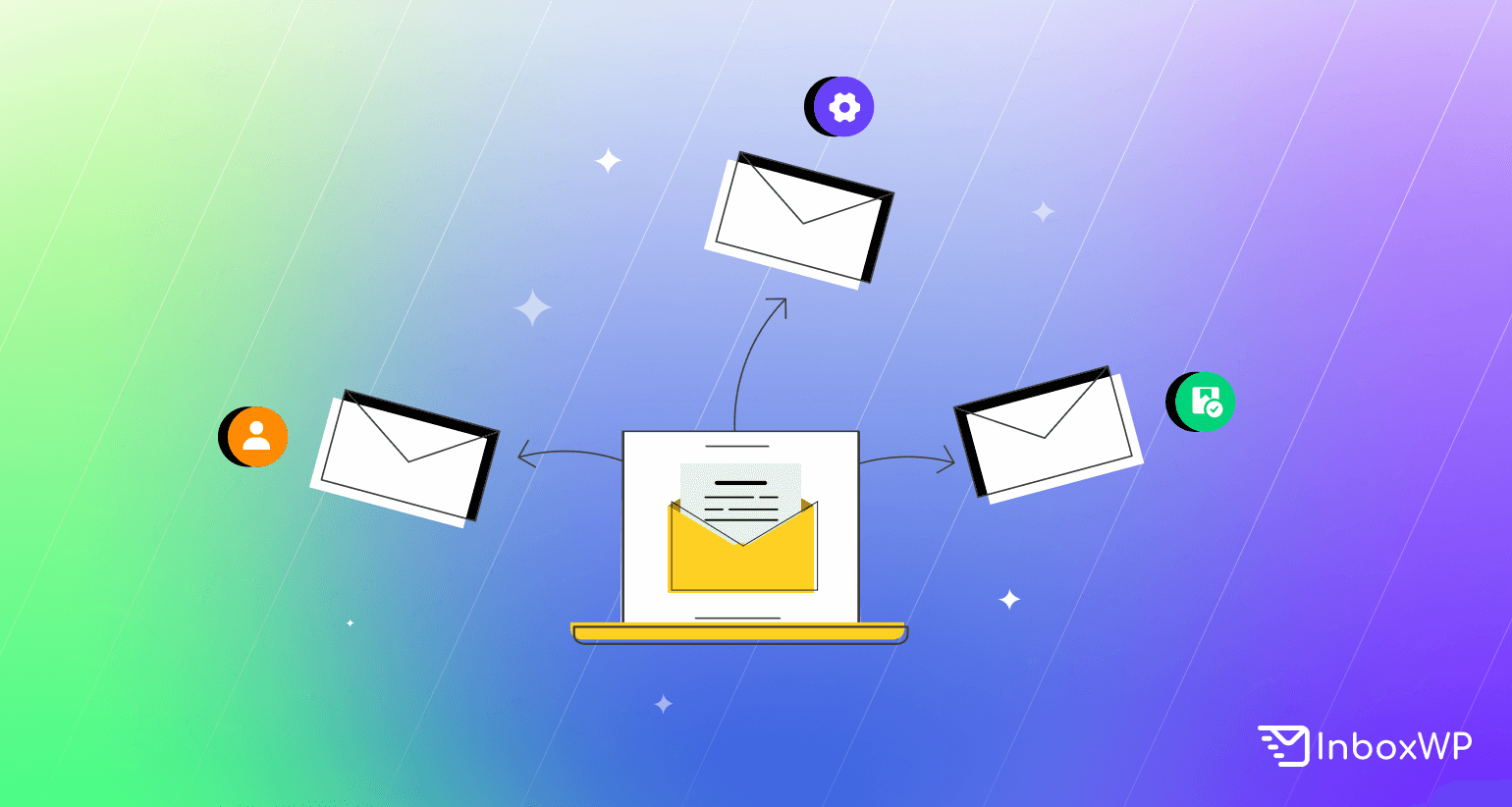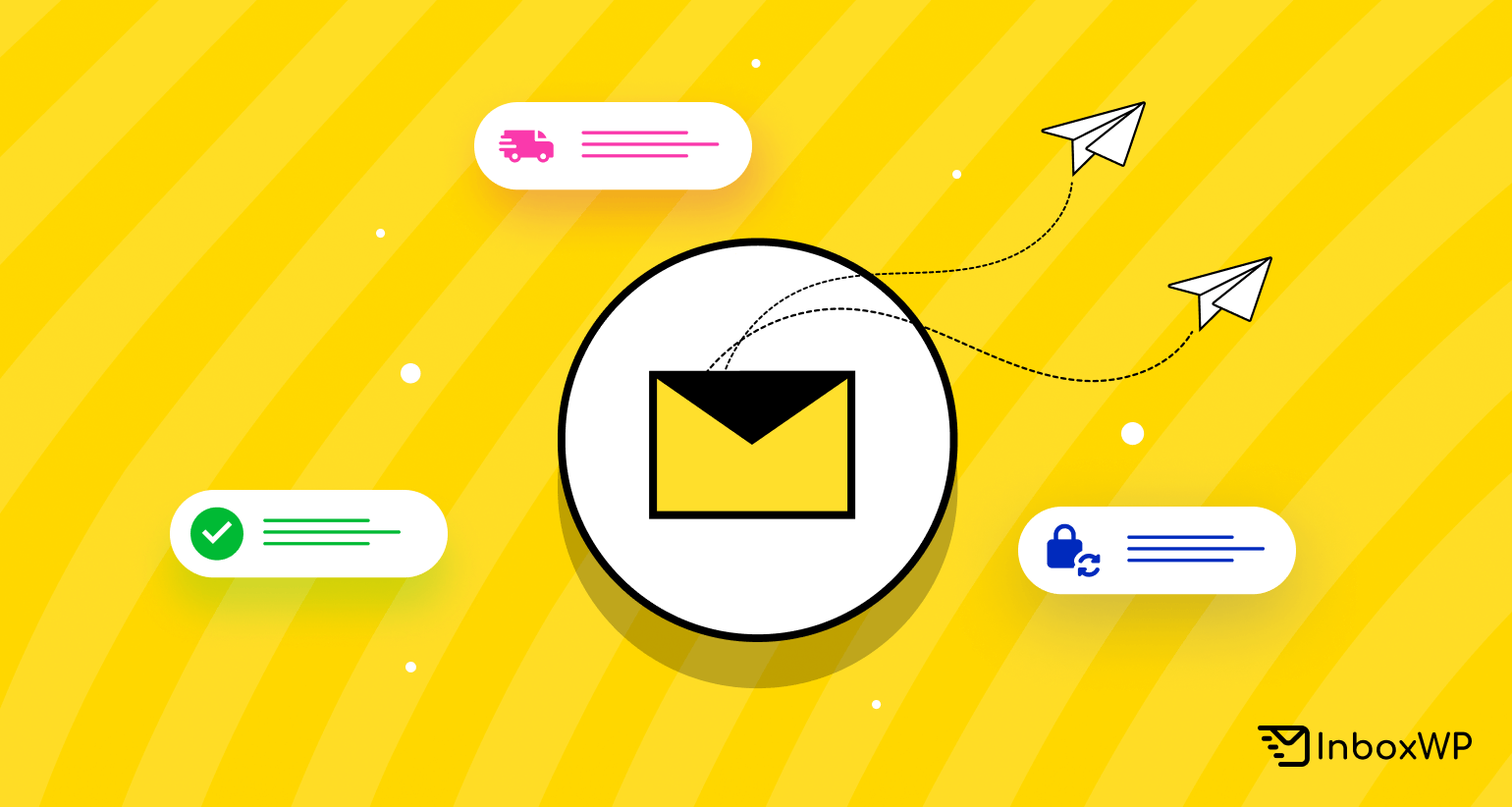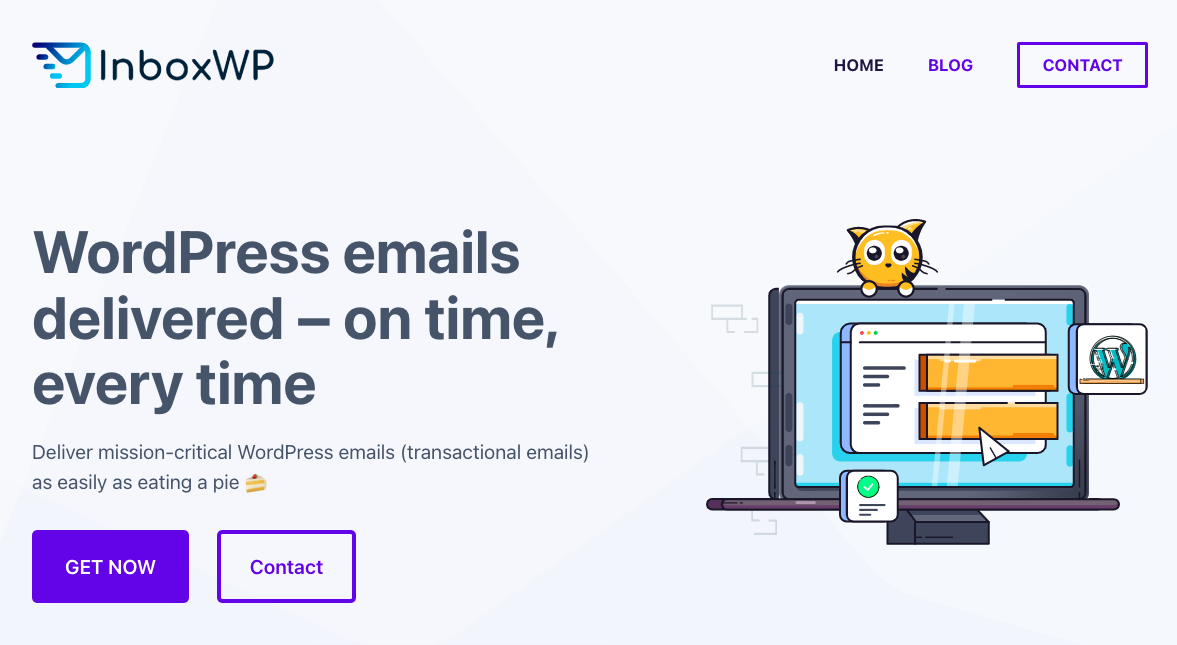Scammers and spammers are always trying hard to get into your email inbox. At the same time new technologies, rules, and laws have been implemented to keep them at bay.
Chances are high that you, as a legit email marketer, may mistakenly end up getting stuck in those filters.
That’s why you must be careful when crafting emails. Keep your emails aligned with the email deliverability best practices to hit the inbox instantly. Otherwise, all your efforts and time will result in nothing but frustration.
Keep reading this article to know how you can escape spam filters and land your emails safely in your readers’ inboxes. We’ve discussed some of the key email deliverability best practices that you should follow to ensure your emails reach their destination.
Quick Navigation:
- Email deliverability – what does it mean?
- What may affect your success in email deliverability
- How to improve email deliverability: 19 best practices
- Best email testing tools you can use in 2025
- Try InboxWP to improve deliverability for your transactional emails
- Send deliverable emails following the best practices
Email deliverability – what does it mean?
The deliverability of an email refers to how often it actually reaches the inbox of the recipients. Blocked ISPs and spam folders are usually the main reasons for email deliverability failures.
A poor deliverability rate means your emails aren’t successfully delivered to their intended recipients. You need to maintain a good sender reputation and write quality emails to increase email deliverability.
ReturnPath reports that one out of every five emails never reaches the inbox. This low deliverability can impact your email marketing campaigns to a great extent.
So, it’s crucial to know what are the reasons that may affect your email deliverability before you can take the necessary measures to improve it.
What may affect your success in email deliverability

The email is sent from the user’s mail server to the recipient’s mail server. If all technical and authentication requirements are met, the recipient’s mail server will accept the email and deliver it to the recipient’s inbox. The recipient will then be able to see and read the email, provided that the email is not affected by the following factors:
Spam filters: Email service providers have sophisticated spam filters that can detect and block emails that are deemed spammy or fraudulent.
Email authentication: If the sending domain or IP address has not been properly authenticated, emails may not reach the recipient’s inbox. Lack of proper authentication methods such as SPF, DKIM, or DMARC can lead to poor email deliverability.
Sender’s reputation: The sending domain and IP address’s reputation can affect the deliverability of emails. A poor reputation can lead to emails being blocked or sent to the recipient’s spam folder.
Email content: The content of the email, including the subject line, sender name, and message body, can affect deliverability. Emails that appear to be spam or contain offensive material are more likely to be filtered out by spam filters.
Email list quality: A poorly managed email list can result in poor email deliverability. This can occur when emails are acquired through spamming or buying lists, which often result in invalid email addresses or recipients who are not interested in your content.
Email server configuration: The email server configuration and setup can lead to emails being blocked or filtered out by spam filters.
Email formatting: Incorrect email formatting or coding can also lead to poor email deliverability. This can include broken links, images that don’t load, or formatting issues that prevent emails from being displayed correctly in the recipient’s inbox.
Email sending frequency: The frequency at which emails are sent, can also impact deliverability. Sending too many emails in a short amount of time can result in lower deliverability rates.
Your email deliverability is partly dependent on the platform that you are using to send your emails. The delivery rate of each e-mail service provider is different. The majority of the time, they fluctuate between 88 and 99%. So, make sure you choose the right one.
How to improve email deliverability: 19 best practices

Now you know the potential reasons that can cause your emails to get lost midway. It’s your turn to follow the best email deliverability practices to help them reach their proper destination. The following guide will help you boost the overall outcome of your email marketing efforts by increasing your email deliverability rate.
1. Avoid sending emails to poorly managed lists
It’s always a bad idea to buy email lists or manage email lists that have a low response rate. The recipients of a purchased email list may not even know about your service or product. So, sending them unsolicited emails isn’t a good practice. They’re highly likely to mark you as a spammer. Moreover, sending emails to people who didn’t give consent may result in GDPR issues.
Also Read: 9 Proven Tips on How to Make Your WordPress Site GDPR Compliant
2. Get your email leads properly
It’s always better to obtain email addresses through proper channels, such as opt-in forms, pop-ups, social media, and more. You should not scrape sites for email addresses. Scraping can result in collecting and using personal information without the individual’s consent, which is unethical and potentially illegal. Besides, these email addresses can become outdated or incorrect, leading to a waste of time and resources.
3. Omit people who don’t respond
Email service providers use engagement metrics to determine whether emails are going to the inbox or the spam folder. If a high number of your recipients aren’t opening or responding to emails, it can affect your email’s deliverability. Omitting non-responders can help maintain a healthy email list and improve deliverability.
Moreover, people who don’t respond to emails are likely not interested in the content. So they are no more a valuable part of your email list. By omitting them, your email list becomes more focused and relevant to those who are interested.
4. Focus on decreasing the bounce rate

High bounce rates indicate that your emails are not being delivered successfully to your subscribers. This can negatively impact your sender’s reputation and cause your emails to be filtered as spam in the future. So, try to keep the bounce rate as low as possible.
Anything above a 2% bounce rate for your email campaign is worthy of your attention. If you’re seeing bounce rates over 5%, or even as high as 10% or greater, this suggests a significant problem that you will want to resolve.
Campaign Monitor
You should consider hard bounces as well. Invalid, incorrect, closed, or non-existent email addresses are the reasons behind hard bounce. Track your bounce data and regularly clean your email list to remove these subscribers.
5. Avoid spam traps used by ISPs & backlist providers
ISPs and blacklist providers use some email addresses as traps to identify potential spammers. Let me explain. They provide these addresses to websites that sell email lists. As a result, if you buy email addresses or scrape emails from a website, you’re more likely to get one of these trap email addresses. Once you send emails to those trap addresses, you’ll be marked as a spammer, and get backlisted or blocked. So, keep yourself safe from spam traps.
6. Choose a reputable email service provider

A quality email service provider has a robust infrastructure with high-end servers and software that ensures emails are delivered quickly and effectively. It is known for its reliability and good reputation in the market.
So, choose a reputable email service provider to ensure that your emails are not seen as spam or junk mail. You can use weMail to send newsletters, collect leads, automate emails, add subscribers to a list, and manage subscribers efficiently.
7. Allocate your IP addresses properly
If your IP address is associated with a high number of spam emails, it may get blacklisted. This can result in emails not being delivered to the recipient’s inbox. Proper IP allocation helps to reduce the likelihood of your IP address being blacklisted.
Sending a high volume of emails from the same IP also can impact the deliverability of your emails. So, you need to properly allocate your IP addresses to manage the number of emails sent from each IP address. Thus, you can increase the deliverability of your emails and reduce the number of spam complaints.
8. Choose the right email protocol for you
If you want to improve email deliverability, we suggest you use SMTP (Simple Mail Transfer Protocol) as your email protocol. It is widely supported and reliable in handling large amounts of email traffic. Other, commonly used email protocols are POP (Post Office Protocol), and IMAP (Internet Message Access Protocol). Read the following post to know how you can choose the best email protocol for your needs.
<A Beginners Guide to Email Protocols and How to Choose Them>
9. Authenticate your email with SPF & DKIM

Authenticating your email with SPF and DKIM is a crucial step in improving the deliverability of your emails. SPF (Sender Policy Framework) is an email authentication protocol that verifies that an email is sent from an authorized domain. The SPF record is added to the domain’s DNS (Domain Name System) and contains a list of authorized IP addresses that are allowed to send emails on behalf of the domain.
DKIM (DomainKeys Identified Mail) is another email authentication protocol that uses digital signatures to verify the authenticity of an email. The digital signature is added to the header of the email and is verified by the recipient’s email server. You can ensure that your emails are not marked as spam by implementing both SPF and DKIM.
10. Streamline your opt-in process

Keep the number of fields that you require for opt-in as minimal as possible. Only ask for the most important information such as the email address, name, and location. Consider using a double opt-in process to ensure that you only receive subscriptions from those who truly want to get your emails. This involves sending a confirmation email to the recipient to confirm his/her subscription.
11. Write emails following the best practices
Your email deliverability doesn’t solely depend on the technical aspects of the email-sending activities. The email itself plays a big role. You need to follow the best email writing practices to enhance your deliverability. Here are some tips for you:
- Avoid using all caps, excessive exclamation points, and overuse of keywords that may trigger spam filters.
- Personalize your emails. Add the recipient’s name and address to the subject line and body of your email.
- Keep your subject line concise, clear, and relevant to the content of your email.
- Optimize your email content by using HTML coding.
- Avoid images that are too large, and use alt tags to describe images in case they do not load.
- Avoid using words or phrases that may be associated with phishing, viruses, or other malicious activities.
- Avoid using trigger words (commonly used by spammers) like “earn money fast,” “get rich quick,” and “limited-time offer.”
- Provide a clear call to action to encourage your recipient to engage with your email.
Test your emails regularly to ensure that they are being delivered to the inbox, and track their performance to identify any issues that may impact deliverability.
12. Let your readers unsubscribe easily
You must add a visible and clear unsubscribe link to the email footer. The readers should be able to unsubscribe from your email list within a few clicks. This process needs to be as easy as possible.
According to Litmus, a whopping 43% of people mark emails as spam because they find it difficult to opt out of them in the first place. It’s better to lose a subscriber than to get flagged as a spammer.
13. Use tools to check your email deliverability

You can use email deliverability tools to track the delivery of emails and determine whether they are reaching the recipient’s inbox or not. These tools monitor your email sender’s reputation as well. They can also identify issues that may be impacting the delivery of your emails, including issues with the email client, server, or recipient’s email filters.
You can use good quality deliverability testing tools to find out valuable insights into the delivery of your emails. The findings will help you take the required steps to boost your email deliverability. The following section of this article mentions the best email testing tools you can use.
Best email testing tools you can use in 2025
A comprehensive email analytics tool can provide deliverability insights, spam filter testing, and domain reputation monitoring. It helps you identify any potential issues with your email deliverability and provides recommendations to improve it. Let’s have a quick look at the list of the best email testing tools. Use any of them to ensure that your emails are reaching their intended recipients.
1. Mail Tester
A free tool that allows you to test the deliverability of your emails. Simply send an email to their testing address, and they will analyze the content and headers to see if it will be delivered or not.
2. Email on Acid
A comprehensive email testing tool that offers an Inbox Preview and Spam Filter Testing to help you identify any potential deliverability issues.
3. Litmus
A paid tool that provides a wide range of email testing, including deliverability testing, spam filter testing, and rendering previews.
4. Postmark
An email delivery service that offers deliverability monitoring and reporting to help you track and improve your email deliverability.
5. Return Path

A paid email deliverability tool that provides detailed reports and insights on the performance of your email campaigns.
6. GlockApps
An email deliverability and spam testing tool that helps you understand the behavior of your emails in different email clients and spam filters.
7. SenderScore
A free tool that provides real-time information on your email reputation, including sender scores and deliverability reports.
8. MXToolbox
It is a free online service that provides a range of email testing tools, including email server testing, domain lookup, and spam filter testing.
9. ISNotSPAM
It is a free online service that provides a quick and easy way to test the deliverability of your emails. It analyzes the content and headers to determine if it will be delivered to the recipient’s inbox or not. ISNotSPAM also provides a report on the potential spam triggers in your email and offers recommendations to increase deliverability.
Try InboxWP to improve deliverability for your transactional emails

You can use InboxWP to send critical transactional emails easily. It provides you with the security and reliability you need when sending transactional emails from WordPress. Business-critical emails such as Password Reset Emails, Registration Emails, and Course Completion Emails are crucial to the success of any company. Using InboxWP, you can be assured that all WordPress transactional emails will reach their destination in a timely manner.
Here are a few reasons to choose InboxWP to increase your email delivery rate.
- InboxWP comes with an easy-to-use interface for configuring all system emails in one place
- It helps you get rid of all the common problems associated with sending emails
- It takes care of all your WordPress email needs
- InboxWP complies with the rules set by email clients (Microsoft Outlook, Gmail, Apple Mail, etc.)
- Almost all popular email marketing plugins work well with InboxWP
Send deliverable emails following the best practices
Let’s recap the email deliverability best practices we discussed in this article. These tips include maintaining a healthy email list, personalizing your copies, authenticating your email, avoiding spam trigger words, regularly testing your emails, and more. Implementing these practices will help you achieve the desired results from your email marketing campaigns and establish a trustworthy relationship with your subscribers. It may also better the chances of getting higher engagement rates.